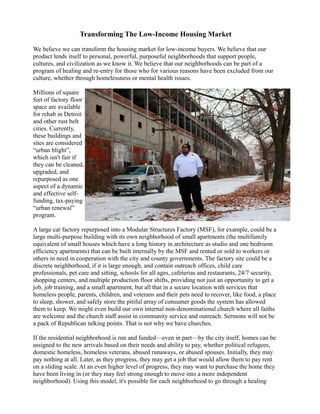The document outlines a transformative vision for low-income housing markets, proposing modular structures as a solution to urban blight, social inclusion, and community healing for vulnerable populations. It emphasizes creating supportive neighborhoods with essential services that integrate formerly marginalized individuals, while addressing the challenges of financing and zoning for modular homes. The model aims to revitalize cities by utilizing existing infrastructure and fostering cultural diversity, ultimately improving access to affordable housing for low-income buyers.










